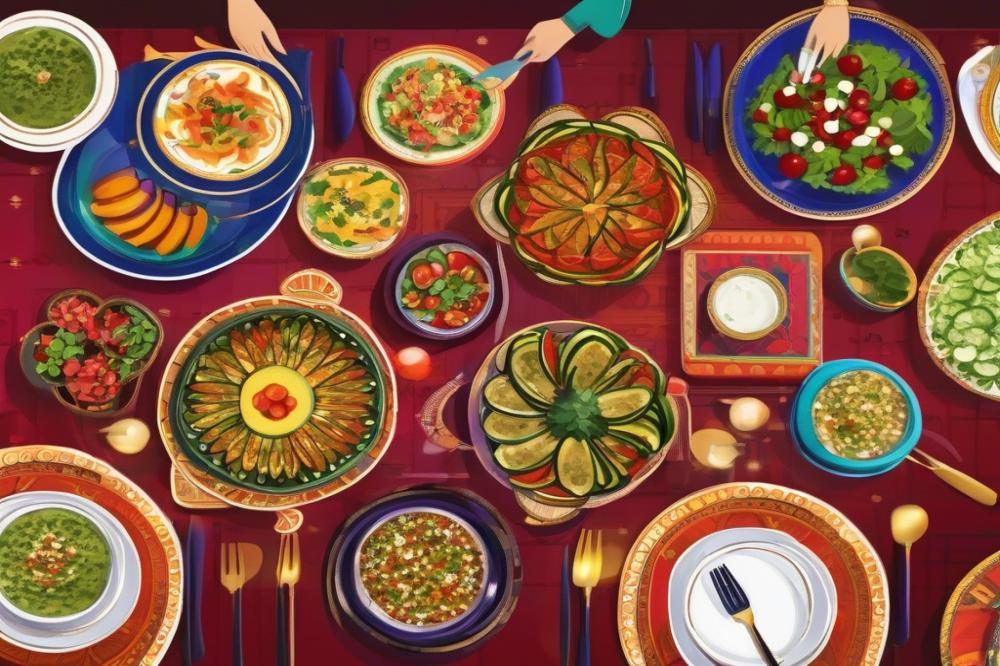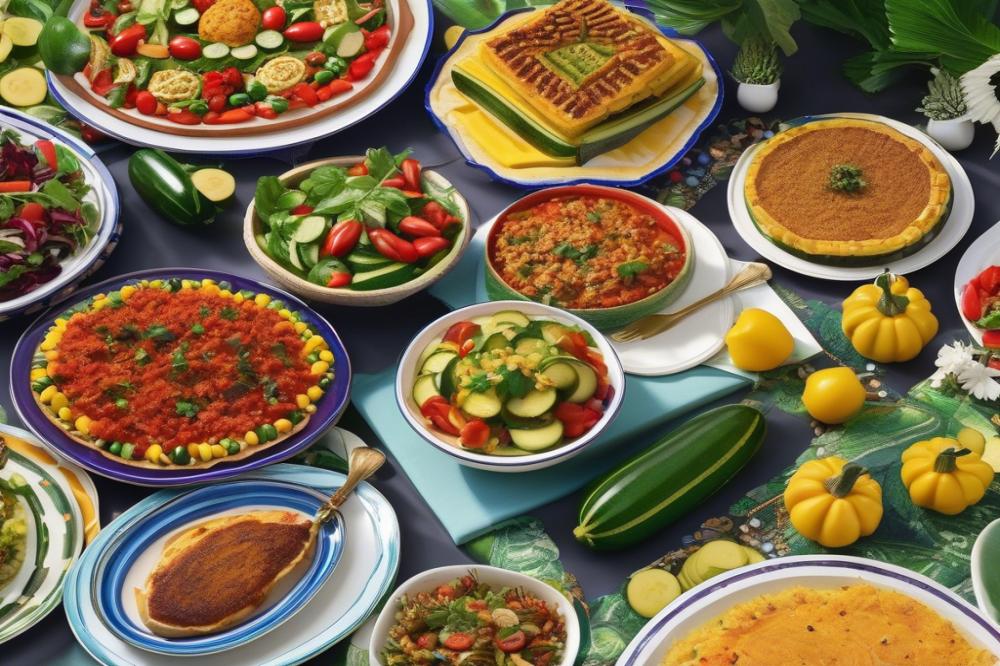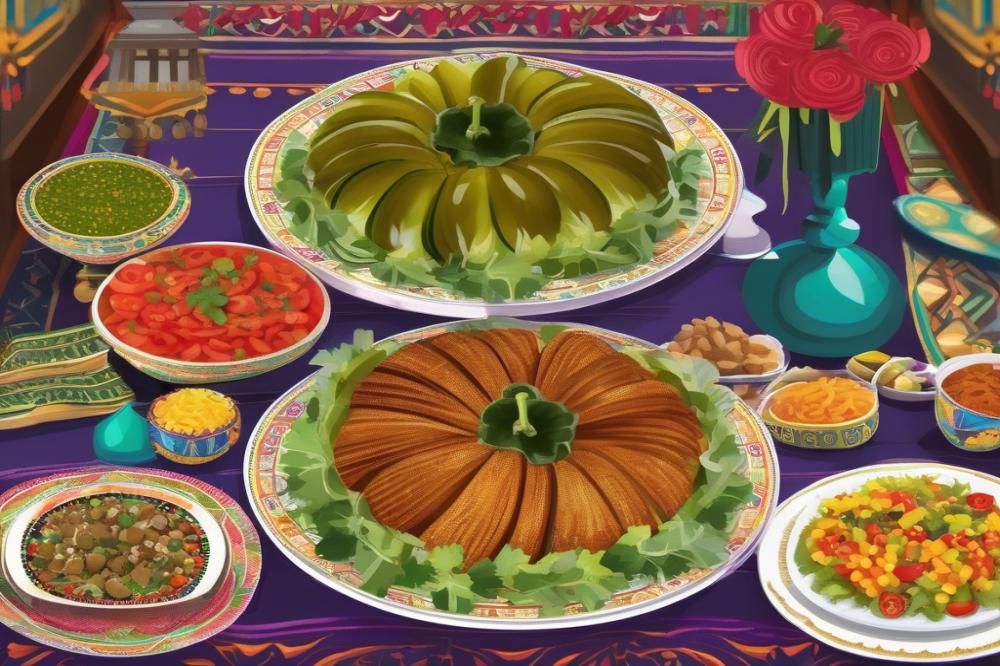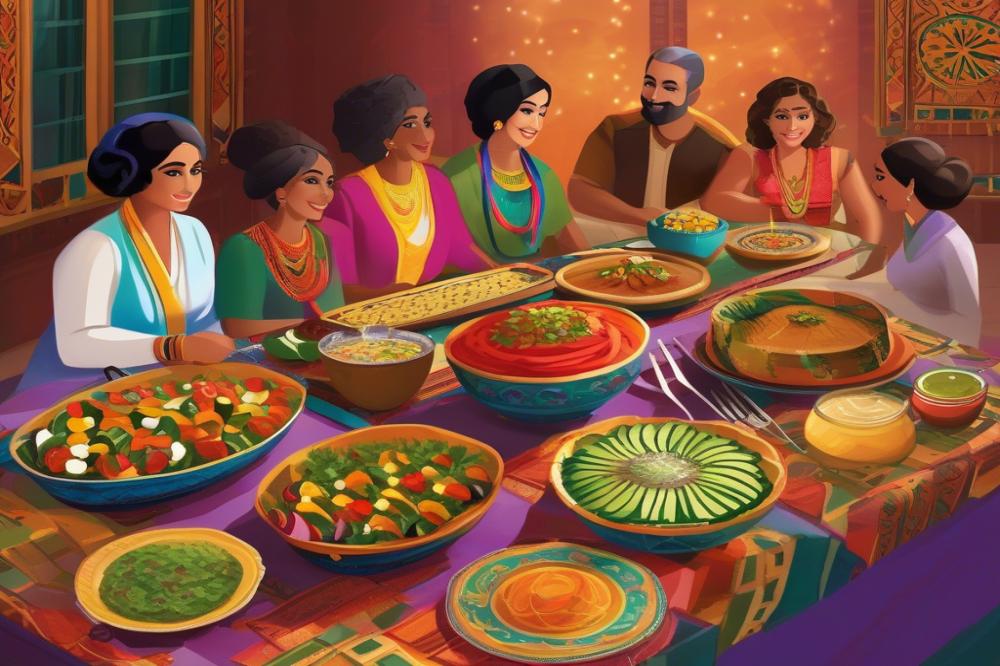The Secrets of Making Mahshi Stuffed Vegetables Egyptian Style
Overview of Mahshi in Egyptian cuisine
Mahshi is a beloved dish within Egyptian cuisine, cherished by many families across the country. This special meal showcases the rich flavors and traditions that define the culture. Families often gather to enjoy Mahshi during special occasions, making it a staple for celebrations and everyday comfort alike.
Stuffed Vegetables, like zucchini and eggplant, are commonly used to create this delightful dish. Each vegetable offers a unique experience when filled with a savory rice filling seasoned with herbs and spices. Preparing Mahshi can be a long process, yet many find joy in crafting these healthy dishes together as a family.
Traditional food plays an essential role in Egyptian homes. recipes passed down through generations often lead to culinary secrets that can elevate this dish to new heights. The popularity of stuffed dishes speaks to Egypt’s diverse culinary landscape. Indeed, Mahshi represents more than just a meal; it is tied to the community, love, and shared experiences. Embracing its flavors and techniques allows cooks of all ages to learn the art of making this classic dish.
What is Mahshi?

Mahshi refers to a popular dish in Egyptian cuisine, involving various vegetables stuffed with a flavorful mixture. Commonly used vegetables include zucchini and eggplant, each offering a distinct texture and taste. The rice filling is the heart of this dish and comes alive with a blend of herbs and spices that elevate its flavor.
This rice mixture typically consists of medium-grain rice, which absorbs flavors well. Fresh herbs like parsley and dill contribute to its vibrant taste. Spices such as cumin and black pepper add warmth and depth. Many families have their own unique recipes, handing down culinary secrets through generations.
The history of this traditional food is rich and significant. Originating in the Middle East, stuffed vegetables found their way to Egypt and adapted over centuries. Mahshi became a staple during festive occasions and family gatherings, symbolizing home-cooked comfort and love.
Variations of this dish vary by region and family traditions. Some people use ground meat in their rice filling, while others opt for vegetarian versions. This adaptability speaks to the evolving nature of Egyptian cuisine, blending cultural influences and personal preferences.
Healthy dishes like Mahshi are often enjoyed by those looking for nutritious meals. Seasoned travelers discover that trying stuffed vegetables is a must when exploring Egyptian culture. Each bite tells a story, representing both the past and present of a vibrant culinary heritage.
Ingredients and Cooking Instructions

List of Ingredients with Quantities:
- Zucchini (4 medium-sized)
- Eggplant (2 medium-sized)
- Long-grain rice (1 cup)
- Fresh parsley (1/2 cup, chopped)
- Fresh mint (1/4 cup, chopped)
- Tomato paste (2 tablespoons)
- Olive oil (3 tablespoons)
- Onion (1 medium-sized, finely chopped)
- Garlic (2 cloves, minced)
- Salt (1 teaspoon)
- Black pepper (1/2 teaspoon)
- Ground cinnamon (1/4 teaspoon)
- Vegetable broth or water (3 cups)
Cooking Instructions:
Start by prepping the vegetables. Hollow out the zucchini and eggplant with a small spoon or knife. Be careful not to break the skin as you create a space for the filling. This step is crucial for achieving that perfect stuffed texture.
Next, heat olive oil in a skillet over medium heat. Add the finely chopped onions and minced garlic. Sauté until golden brown. The aroma from this mixture will layer your dish with flavor. Remove it from heat and let it cool slightly.
In a large mixing bowl, combine the long-grain rice, sautéed onion and garlic, fresh herbs, salt, black pepper, and a hint of ground cinnamon. This rice filling reflects the richness of Egyptian cuisine with its blend of spices and herbs. Stir until everything is well mixed.
Now it’s time to stuff the vegetables. Carefully fill each hollowed zucchini and eggplant with the rice mixture, packing it in gently. Pay attention to how much filling you use; don’t overstuff to allow the vegetables to cook evenly.
Place these stuffed delights in a large pot. Add the tomato paste and pour in vegetable broth or water until the vegetables are just covered. This not only aids in cooking but also adds moisture and flavor to the dish.
Cover the pot and cook on low heat for about 45 minutes. Check occasionally to ensure nothing is sticking to the bottom. At the end of this time, the vegetables should be tender, and the rice filling should be fully cooked.
Nutritional Benefits:
These stuffed vegetables are not just delicious; they are packed with nutrients, making them healthy dishes. Zucchini and eggplant are low in calories, yet high in fiber. Fresh parsley and mint bring vibrant flavor along with important vitamins. The rice filling provides carbohydrates, giving you energy without excess fat.
With tomato paste in the mix, you also get a boost of antioxidants. Each serving reflects the culinary secrets of traditional food while promoting a balanced diet. This recipe blends comfort and nutrition seamlessly, making it a great option for family meals.
Herbs and Spices in Mahshi

Flavors in Egyptian cuisine come alive through the use of fresh herbs and vibrant spices. Parsley and mint play key roles in enhancing stuffed vegetables. These herbs are more than just flavor boosters; they add freshness and depth that elevate the dish.
Traditionally, parsley is chopped finely and mixed into the rice filling. This adds a bright, green note that contrasts beautifully with the earthy taste of zucchini and eggplant. Mint, on the other hand, brings a cooling effect, balancing the flavors effectively. Often, it’s used either raw or lightly cooked, preserving its scent and properties. Many recipes embrace both herbs for richness.
Cinnamon is another integral spice in Mahshi. It might seem unusual, but adding this warm spice provides a sweet undertone. It serves to enhance the overall flavor profile. Some cooks believe cinnamon offers a hint of nostalgia and comfort.
Using these ingredients carries multiple health benefits, too. Parsley is known for its antioxidant properties. Mint can aid digestion, making these stuffed vegetables not only delicious but beneficial for well-being. Many appreciate traditional food for combining health and flavor effortlessly.
Exploring culinary secrets reveals that the quality of herbs and spices matters greatly. Fresh ingredients make a noticeable difference. They create layers of flavor that dried versions simply cannot match. When cooking, some opt to toast spices slightly to release their oils and aromatic qualities. This step enhances the dish further.
Families pass down recipes for Mahshi from generation to generation, each adding personal touches. Understanding the use of herbs and spices reveals deeper connections to Egyptian culture. Cooking becomes not just a chore but an expression of love and heritage.
Variations of Mahshi

Egyptian cuisine features diverse recipes that vary by region. In some areas, zucchini serves as the main vegetable for stuffing, while in others, eggplant takes the spotlight. Both choices offer a delightful way to enjoy this traditional food. The filling often consists of rice, herbs, and spices, creating a flavorful bite.
Different regions incorporate local ingredients into their recipes. In coastal towns, fresh seafood may blend into the rice filling, adding a unique taste. Conversely, rural areas might include ground meat, making the dish more hearty and filling. Each adjustment reflects the local palate and available produce.
Herbs and spices play a significant role in flavoring. Cumin and coriander are common in many versions. In contrast, those who prefer a spicy kick often add chili powder or paprika. These variations reveal the culinary secrets passed down through generations.
Certain cities in Egypt are known for their distinct takes on this dish. Cairo’s street vendors might offer a quicker version, filled with simple seasonings. Upper Egypt, on the other hand, is famous for its rich and aromatic blends, showcasing its regional heritage.
Cultural influences also shape how people prepare their healthy dishes. Whether it’s a family recipe or a new twist, the essence remains the same. Friends and families gather around the table, sharing their cherished versions of this classic meal, constantly evolving it while respecting tradition.
Serving Suggestions and Pairings
When enjoying Mahshi, a variety of side dishes can enhance its rich flavors. Salads, for example, offer a fresh contrast. A classic Egyptian salad made with tomatoes, cucumbers, and parsley is always a winner. Adding a squeeze of lemon brightens the dish, balancing the heavier flavors of stuffed vegetables.
Another great option is a simple green salad served with a house dressing. This can include olive oil, vinegar, and herbs. Incorporating lettuce, radishes, and sliced onions provides a refreshing crunch.
Yogurt-based sauces serve as perfect companions as well. A cucumber and mint yogurt sauce can cool the palate. The creamy texture pairs beautifully with the rice filling in the zucchini or eggplant. This sauce keeps things light, while still delivering a burst of flavor.
For those looking to elevate their dining experience, pairing Mahshi with traditional drinks can make a difference. Freshly squeezed lemonade is a popular choice. Its sweetness balances the savory notes of the dish. Alternatively, a glass of hibiscus tea provides a slightly tangy flavor that complements the meal.
Egyptian cuisine often features a variety of healthy dishes. Consider serving a warm lentil soup as a starting course. It’s not only filling. This soup warms the body and prepares the palate for what’s to come. Merging traditional food elements creates a well-rounded meal experience that celebrates local recipes.
Incorporating herbs and spices in your dishes adds depth. Think about using dill and coriander in salads. A hint of cumin in lentil soup adds warmth and earthiness. These elements, combined, reveal the culinary secrets of this vibrant cuisine.
Final Thoughts on Mahshi in Egyptian Cuisine
Mahshi holds a cherished place in Egyptian cuisine, showcasing the rich tapestry of flavors that define this culinary tradition. Each bite delivers a burst of taste, blending herbs, spices, and the natural sweetness of vegetables. Preparing this dish is not just about cooking; it is an act of love, often bringing families together. The process of stuffing and rolling each vegetable can be a joyful experience, allowing for creative expression.
Recipes for Mahshi vary from family to family, offering a glimpse into Egypt’s diverse culture. Some may prefer rice stuffed with minced meat, while others might enjoy a vegetarian version filled with herbs and nuts. This dish is a testament to the deep-rooted traditions that have been passed down through generations. In many homes, it marks special occasions and gatherings, bringing everyone around the table.
Trying to make this delightful meal at home can unlock the culinary secrets of Egyptian cooking. With fresh ingredients and some patience, you can recreate this comforting classic. Engaging in the preparation can transform your kitchen into a warm and inviting space. So, gather your family or friends, roll up your sleeves, and enjoy the process of creating something truly special.
Now, you are encouraged to dive into this wonderful experience. Unleash your inner chef and experience the joy of making this popular dish. You will not only savor the rich memories of Egyptian cuisine, but you’ll also create connections through the love for food.



